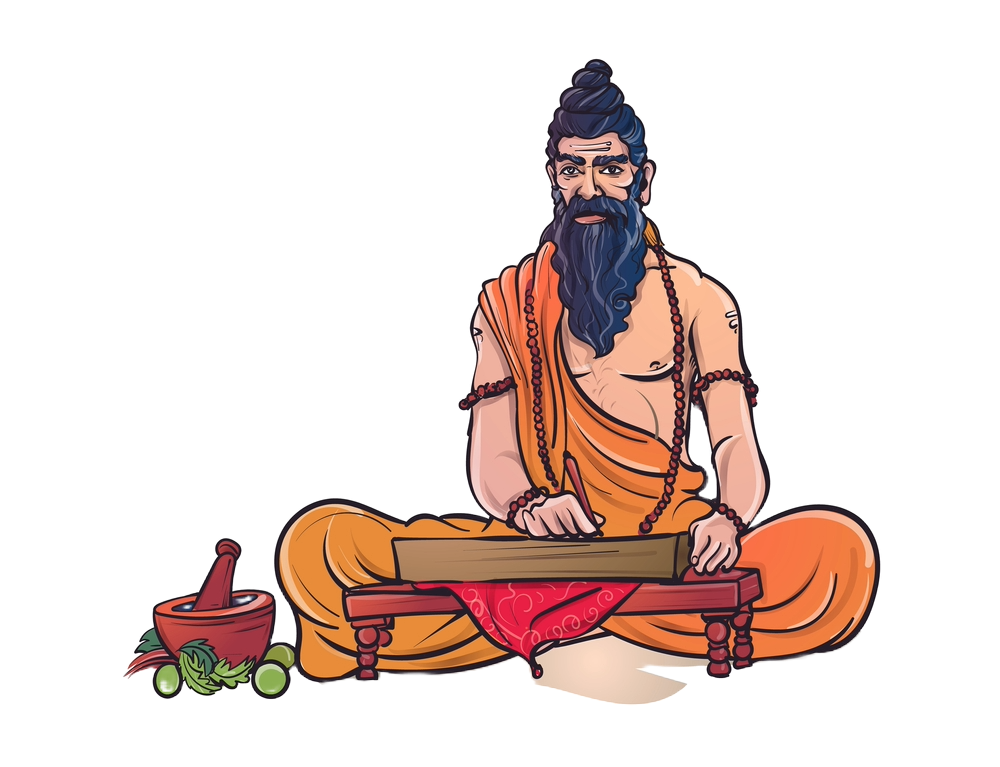
What is Ayurveda?
The term Ayurveda comes from the old Sanskrit language and is a combination of the words “Ayur” (life) and “Veda” (knowledge or science). It is one of the world’s oldest holistic treatment systems and translates to “the science of life”. Ayurveda has been practiced for over 3,000 years, starting in India. It has endured the test of time and is still an important part of health and wellness in India and around the world.
The fundamental tenet of Ayurveda is that mental, physical, and spiritual equilibrium are necessary for overall health and well-being. Its main objective is to advance health rather than only combat illness. Treatments, however, could be suggested for particular medical issues. Let’s explore the core ideas, methods, and uses of Ayurveda in detail.

Ayurveda’s Historical Background
The roots of Ayurveda can be found in the ancient Indian civilization, particularly during the time of the Vedas, which are India’s oldest sacred scriptures. The poems and ceremonies in the Rigveda and Atharvaveda, which address longevity, illness, and health, are the first written accounts of Ayurvedic procedures. On the other hand, the Ayurvedic foundation texts, the Sushruta Samhita and the Charaka Samhita, were written between 1200 and 700 BCE.
Charaka Samhita: Charaka is frequently cited as Ayurveda’s founder. His encyclopedia, the Charaka Samhita, is a fundamental work that describes the diagnosis, treatment, and life philosophy of Ayurveda. It highlights how crucial lifestyle, nutrition, and mental health are to preserving health.
Sushruta Samhita: Renowned for his contributions to surgery, Sushruta is another important Ayurvedic figure. One of the first books on surgery ever written is the Sushruta Samhita, which explains surgical methods and tools. The contributions of Sushruta established the foundation for many surgical techniques that are still in use today.
These books, which cover a wide range of medical topics such as surgery, internal medicine, pediatrics, toxicology, rejuvenation, and aphrodisiac therapy, provide the foundation of Ayurvedic knowledge.
The Ayurvedic Philosophy
Ayurveda is a way of life that stresses living in accordance with the natural rhythms of the environment rather than just a medical method. It is predicated on the idea that there are five elements in the universe: fire, water, ether (space), air, and earth. Together, these components give rise to the three basic energies, or doshas, that comprise the human body: Pitta, Kapha, and Vata. It is essential to comprehend these doshas in Ayurvedic practice.
1. The Vata, Pitta, and Kapha Doshas
The core of Ayurveda is the idea of doshas. The biological energies that permeate the human body and mind are called doshas. They provide each living thing a unique blueprint for happiness and health, regulating all mental and bodily functions.
Vata Dosha: Vata is connected to the ether and air components. It controls all aspects of movement, including respiration, heart rate, muscle and tissue movement, and cellular activity. It is connected to communication and creativity as well. Vata encourages flexibility and inventiveness when it is in balance. When out of balance, it can lead to anxiety, fear, and a host of medical problems like arthritis, dry skin, and constipation.
Pitta Dosha: Water and fire are related to Pitta. It controls energy production, digestion, and metabolism. Pitta is associated with intellect, comprehension, and the processing of feelings and ideas. Pitta in balance leads to wisdom and contentment. On the other hand, an unbalanced Pitta can result in bodily problems such ulcers, inflammation, and skin rashes as well as feelings of wrath and dissatisfaction.
Dosha Kapha: Kapha is connected to earth and water. It controls the body’s structure, giving it stability and physical form. In addition, kapha is in charge of the immune system, joint lubrication, and emotional stability. When in equilibrium, Kapha gives strength, serenity, and endurance. It can lead to sadness, weight gain, sluggishness, and excessive sleep when it is out of balance.
Every individual possesses a distinct blend of these three doshas, typically with one or two being more predominate. Their Prakriti, or innate constitution, is this special blend. In Ayurveda, knowing your Prakriti is crucial since it guides you in selecting the proper food, way of life, and medical interventions to preserve equilibrium and wellness.
2. Ether, Air, Fire, Water, and Earth are the Five Elements
In Ayurvedic philosophy, the five elements—also referred to as Pancha Mahabhutas—are the fundamental components of nature. Every object in the cosmos, including the human body, is formed by the combination of these components in different ways.
Ether, also known as Akasha, is the essence of emptiness or the possibility of being. It symbolizes space. It has a connection to the respiratory system, throat, and sensation of sound.
Air, or Vayu, is a symbol for mobility and is connected to all bodily motion, such as breathing, circulation, and mental activity. It has a connection to touch.
Agni, or fire, is a symbol of transformation and is connected to the body’s energy, metabolism, and digestion. It has a connection to vision.
Water (Jala): Water is a symbol of fluidity and is connected to bodily fluids like saliva, lymph, and blood. It has something to do with taste.
Earth (Prithvi): Stands for solidity and is connected to the body’s structure, which includes the muscles, tissues, and bones. It has a connection to smell.
In Ayurvedic practice, these components and their combinations affect the doshas, which in turn affect every facet of health and illness.
Diagnosis and Treatment in Ayurveda
The extensive diagnostic techniques of Ayurveda consider a patient’s mental, emotional, and spiritual well-being in addition to their physical symptoms. Finding dosha imbalances and bringing them back to equilibrium is the aim.
Ayurvedic Techniques for Diagnosis
Assessing the pulse (Nadi Pariksha): Using the pulse at the wrist to determine the dosha balance, pulse diagnosis is one of the most significant diagnostic techniques in Ayurveda. A skilled Ayurvedic doctor can identify minute variations in the pulse that point to internal abnormalities.
Observation (Darshanam): An important diagnostic tool for imbalances is the examination of the patient’s physical features, including the skin tone, eyes, tongue, and nails. The doshas in the body are reflected in each of these aspects.
Interrogation (Prashnam): The practitioner can better grasp the underlying reasons of imbalances by asking detailed questions about the patient’s lifestyle, diet, emotions, and habits.
Touch (Sparshanam): A physical examination that includes skin temperature measurement and probing can reveal further information about the dosha’s condition.
Urine and Stool Analysis (Mutra and Mala Pariksha): The body’s level of digestion and metabolism, as well as the existence of toxins (Ama), can be inferred from the color, consistency, and odor of urine and stool.
Ayurveda Medicines
Following the identification of an imbalance, the goal of Ayurvedic treatment is to bring the body back into balance using a variety of techniques including herbal treatments, detoxification, dietary adjustments, and massage, yoga, and meditation.
Dietary Modifications (Ahara): An essential component of Ayurvedic medicine is diet. Food is thought of as medicine, and many illnesses can be prevented and treated with a healthy diet. Dietary advice from an Ayurvedic practitioner is customized according to a person’s dosha, season, and present health. For instance, someone with an imbalance in Pitta may be advised to stay away from hot meals that can aggravate Pitta and to eat cooling foods like cucumbers.
Lifestyle Adjustments (Vihara): Living in balance with the cycles of day and night and the changing of the seasons is highly valued in Ayurveda. This covers consistent sleep schedules, exercise, and stress reduction methods. It’s usually advised to stick to a daily regimen (Dinacharya) that incorporates exercises like oil pulling, dry brushing, and meditation.
Herbal Remedies (Dravyaguna): Ayurveda treats physical imbalances with a wide range of herbs. These plants have been chosen for their impact on the doshas as well as their qualities (e.g., heating, cooling, or grounding). Common herbs used in Ayurveda medicine are Triphala (for detoxification and digestion), Turmeric (for inflammation and immunity), and Ashwagandha (for vitality and stress).
Panchakarma detoxification: Panchakarma is a set of medical procedures that rid the body of toxins and rebalance the doshas. Vamana (therapeutic vomiting), Virechana (purgation), Basti (medicated enemas), Nasya (oil administration via the nose), and Raktamokshana (bloodletting) are its five primary procedures. Panchakarma is regarded as a potent technique for revitalizing the body and mind and is usually performed under the guidance of an experienced Ayurvedic practitioner.
Ayurvedic Therapies (Upakarma): To balance the doshas and encourage relaxation and healing, a variety of therapies are utilized, including Abhyanga (oil massage), Shirodhara (warm oil applied to the forehead), and Swedana (herbal steam therapy). These treatments are frequently combined with Panchakarma or incorporated into a daily regimen for overall well-being.
Yoga and Meditation: Ayurveda and yoga have a close relationship, with yoga being seen as a necessary activity to keep the doshas balanced. Yoga poses, or asanas, are selected according to the individual’s imbalances and constitution. Ayurvedic practitioners also emphasize meditation as a means of promoting overall wellbeing, lowering stress levels, and calming the mind.
Like it was thousands of years ago, Ayurveda offers a special and beneficial approach to health and wellness. People can attain optimal health and well-being by utilizing natural medicines and therapies, recognizing and balancing the doshas, and adhering to a customized diet and lifestyle.
In a world where chronic illness, stress, and environmental pollutants are becoming more prevalent, Ayurveda offers a comprehensive approach to treatment that deals with the underlying causes of disease rather than just its symptoms. Many people are finding the benefits of this ancient science, whether through applying Ayurvedic principles to their daily lives, seeking out Ayurvedic treatments, or purchasing Ayurvedic items.
With Ayurveda providing a road to health and harmony based on life’s natural cycles, its ageless knowledge will surely play a crucial role in healthcare’s future as it continues to gain recognition and acceptance around the world. The path to balance, wellness, and a closer relationship with the world and yourself is one that is well worth taking, regardless of how long you have been practicing Ayurveda.


